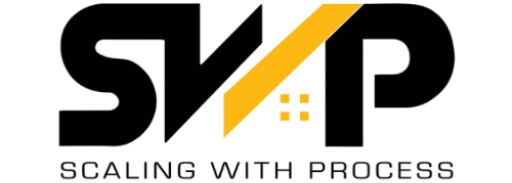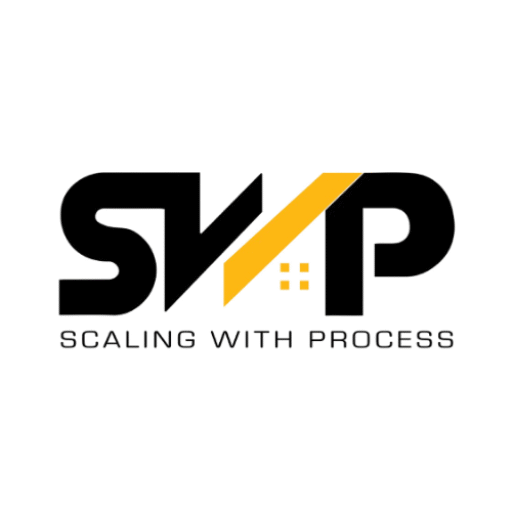Your brand is the beating heart of your business. It dictates the way you look, feel, and communicate with your audience. It’s how you demonstrate your brand values and stay consistent across channels.
Having a strong, consistent brand will make you instantly recognizable while building long-term trust and customer loyalty. From tone of voice (TOV) and messaging right the way through to your logo and color palette, the way you present yourself will have a direct impact on your business’s ongoing success.
But, what’s the best way to showcase your assets and earn brand recognition across channels? The short answer: brand asset management.
Developing a cohesive brand asset management system will ensure you can access your most important marketing materials exactly when you need them. Doing so will save time, boost productivity, and improve the impact of your campaigns.
In this blog, we will cover:
- What are brand assets?
- What is brand asset management?
- Why is effective brand management important?
- 3 essential brand asset management tips
- How to make your brand more recognizable
What are brand assets?
Brand assets are any material that represents your brand’s visual identity, values, and communication style. These assets are what you use to promote your brand or bring your marketing campaigns to life, and include:
- Your brand name
- Your logos (usually in multiple styles or formats)
- Branded artwork
- Color palettes
- Graphics
- Product packaging
- Slogans, hooks or taglines
- Songs or sound bites
- Videos
- Brand or TOV guidelines
- Marketing materials (business cards, letterheads, and collateral)
- Templates (e.g., content for webinars, press releases, and sales videos)
Who manages the assets now? Your marketing team, design, brand, across departments? Who’s responsible for it, updates it, distributes it etc?
BAM vs DAM: what’s the difference?
Your brand assets are one of the most valuable elements of your business. Not only are they for internal use (think marketing teams, sales executives, brand managers, and customer success teams), but freelancers and agencies will also use them for PR purposes or campaign collaboration.
In addition to brand asset management, you may have heard of digital asset management (DAM). Knowing the key differences between these two systems is essential to creating the right system for your business.
BAM is essentially a branch of DAM. While DAM is broader and based on creating an efficient system for accessing or distribution of every digital file or asset within the business, BAM focuses on branding only.
Your BAM processes into your DAM system, but exists to ensure that your brand assets are accessible, applied correctly, and used consistently across channels. Certain assets within your BAM system may also be print-based rather than digital-only.
Listen to our podcast with Jason Byer, Marketing Manager of Crowdspring to find out ‘Why is Branding Important?’
What is brand asset management?
Brand asset management (BAM) is the art of making the storage, management, and distribution of your key brand assets efficient and effective.
With an accessible system, you can quickly and easily find your most important brand assets. Rather than scouring through folders, you can locate them with ease for use in your content, campaigns, and communications.
In addition to improving the way you manage your assets, BAM is also about ensuring they’re used in a way that not only preserves the integrity of your brand, but makes a positive impact across platforms.
Why is effective brand asset management important?
Did you know? According to research from Campaign Asia and Forrester, only 15% of brand assets are truly distinctive and make a real impact. By creating an efficient BAM system, you’ll likely make better use of your best brand assets.
BAM is an essential part of sustainable marketing success as it will protect your brand’s identity and ensure your messaging is 100% clear and consistent. Here are additional reasons why focusing on your BAM strategy is important:
- Save time: Effective BAM will ensure your entire team can find exactly what they’re looking for quickly and easily. Having a more efficient way of locating and using your assets will save time, boost productivity, and empower your team to place their efforts into more creative or strategic tasks.
- Reduce the possibility of errors: When your team is stretched and your assets are hard to find, mistakes can happen. For instance, you could use the wrong piece of messaging for a campaign or end up with a grainy image that damages your social media engagement. But with a BAM strategy, your team will have the time and resources to make informed choices and check over your assets in detail before signing off.
- Protect your brand’s integrity: Maintain consistency by making it easier to manage marketing assets using a clear framework on how to use them within campaigns or communications. Always remember that your imagery and content make a positive impact across channels and by strengthening your brand you strengthen your reputation.
3 essential brand asset management tips
Let’s look at tips on how to successfully create a BAM system – starting with a detailed audit.
1. Audit your current brand assets
To make improvements to your current BAM system (or lack of one), you’ll need to perform an audit to see what you have and where it’s all located.
Auditing may be a time-consuming process, but it will be worth it in the end. Work through one type of asset at a time (logos, videos, imagery, copy, etc.) to see what you have that’s still valuable to your brand communications.
Delete anything that’s off-brand or surplus to requirement and label the brand assets you want to keep clearly and logically. Once labelled, you should place everything into one central location, with each type of asset segmented into a dedicated sub folder. And always back up your files!
Once you and your team know exactly what you have and where it’s located, you’ll be able to store and find your assets far more easily.
2. Refresh or create your brand asset guidelines
Another essential part of BAM is knowing how to use your assets in a way that makes your brand shine. It’s not enough to organize your assets and make them accessible – you need to guide people on how to implement them in your marketing communications.
A recognizable brand has a striking aesthetic, an original tone of voice, and presents the same way across every channel, from website and landing pages to social media, mobile app, and beyond. To ensure this happens, you need to create a guide that outlines how to handle your brand assets.
You should explain how to locate your files, as well as how to store, label, and document them. It’s also vital that you give guidance on the ‘dos and don’ts’ of handling your assets. These ‘dos and don’ts’ could cover the storage formats you should or shouldn’t use, visual dimension or aspect ratios, rules on video captioning, and ways to approach your branded copy.
Your BAM guideline checklist…
- I’ve offered a clear framework on how to locate, store, and label files
- I’ve shared our brand mission, values, and principles
- I’ve added definitive ‘dos and don’ts’ to using our brand assets in marketing comms
- I’ve included preferred dimensions, ratios, and rules for using imagery
- I’ve covered video creation and editing rules
- I’ve shared advice on how to represent our brand voice with written communications
Tip: Download our brand style elements template and keep track of all every essential element of your brand style, including fonts, imagery, color values, and social media handles.
3. Invest in brand asset management software
Armed with a consolidated space for your files and clear guidelines, you’ll be in a far better position. But, if you’d like to make your system even more efficient, you could invest in a dedicated BAM platform.
A good BAM platform offers a central interface for storing, sourcing, and formatting your files with ease. Many leading BAM tools also have automation features that can arrange, optimize, and monitor brand assets on your behalf. If you have a scaling business that manages brand assets across multiple platforms, working with a reliable BAM software is a good idea. Here are five recommendations for your consideration:
- ioMoVo
- Acquia DAM
- Artwork Flow
- Brandy
- Sparkfive
You can use marketing automation tools to streamline certain aspects of your campaigns and ensure your brand assets make a real impact with your audience.
How to make your brand more recognizable
Developing a clear BAM strategy will improve internal efficiency and ensure your messaging hits the mark. But to make your brand truly recognizable, there are two methods you can adopt to leave a lasting mark in the minds of consumers.
Create synergy between your visuals and brand messaging
I’ve used the term ‘consistency’ a lot in this guide – and for good reason. If your visuals and messaging don’t align across all of your communications, it’s unlikely that people will form a strong association with your brand.
The best brands also create a strong synergy between their visuals and messaging. For example, they use their brand color palette across every marketing channel and ensure visuals and communications represent the brand’s visual identity.
Taking measures to match your brand’s tone of voice with its visual aesthetic will give people a true understanding of your brand’s personality and values.
Take Cleo, for example. As the ‘world’s first financial assistant’, Cleo is a fintech brand on a mission to make money management accessible to the digital generation. The forward-thinking brand has clean, modern visuals that match its clear, conversational, and ‘cut to the chase’ tone.
 Cleo branding example
Cleo branding example
Cleo’s memorable ““Money talks. Cleo talks back” tagline also represents its approachable nature and the platform’s conversational AI-powered features.
The bottom line? Whether you’re traditional, modern, playful, lively or empathetic, make sure your logo, visuals, and copy work in harmony to represent who you are and who you’re talking to.
Position your brand to stand out
The right positioning will give you a clear edge over your competitors and bring your target audience closer to your brand. Effective brand positioning will also provide a definitive direction on how and where to utilize your assets to create maximum impact.
Patagonia does an excellent job of positioning itself as a leader in sustainable clothing and environmental responsibility. Not only does it produce sustainable clothes, but the brand’s visuals and communications demonstrate how Patagonia lives its brand values through sustainable marketing. It also regularly invites its audience to be a part of the change.
 Patagonia branding example
Patagonia branding example
The brand’s dedicated Climate Goals landing page is a prime example of how Patagonia manifests as an environmental leader in its field. It’s this effective brand positioning that makes Patagonia instantly recognizable, resulting in a continual rate of commercial growth.
Here are some quick tips on how to position your brand and make it more recognizable:
- Understand your key audience segments and their specific pain points so you can share your solution. Effective audience listening will help you uncover key insights about your ideal customer personas (ICPs).
- Identify your unique value proposition (UVP) and build your messaging around it. Speak directly to your consumers and avoid being everything to everyone.
- Make sure your TOV and visuals match who you are and how you’re positioning yourself in the market.
- Tell brand stories that bring your products to life and create a genuine connection with your audience.
Tip: Read our guide to brand storytelling in the digital age and create communications that are bold, authentic, and stand out from the crowd.
Advance your digital marketing career with us
If you’re looking to move up the career ladder or simply want to upgrade your skills, DMI’s Postgraduate Diploma in Digital Marketing can be a game changer. You will gain a deep understanding of digital marketing concepts to improve customer experiences and make data-driven decisions, leverage search marketing and demand generation to drive traffic and leads, know how to develop a business strategy and master analytics and planning.







 Innocent’s IG post
Innocent’s IG post